
Side Unbending

The Nealon Equation

The Guitars

The Arch Tops

The Classicals
webpages and Eos image copyright 2015 M Nealon
Flattop acoustic guitars are assembled - not carved. There may be a few braces which are carved after being glued on, but in the main, the guitar parts are separately machined, the sides are bent (typically around a hot pipe), and the whole assemblage is glued together in an assortment of (usually hand-made) fixtures and jigs.
Despite the name, the top is not really flat. The top, and for that matter, the back, of an acoustic guitar has a slight outward bow - "out" being defined as the direction away from the interior volume of the instrument. For one thing, a truly flat top plate would look unattractive; specifically, it would look caved in even if it was flat. This must be a trick of the eye in reflected light. However, a slight outward bow in the top and back does serve to add strength against any inward pressures put on these plates. This tends to stiffen the plates, so luthiers should take the amount of this bow into account when preparing the top.
Every guitar maker is free to create a body shape and call it what he will, of course, but there are several commonly used names for the more-or-less standard body styles. Details of the shapes may vary somewhat by manufacturer.
The dreadnought is a loud, large body instrument, with the sound variously described as "full", or "rich", indicating that many overtones are produced over the full scale. These instruments are oftentimes played in a strumming or rhythm style and are found in country, gospel, or folk music bands, among others. Dreadnought sides barely bend in at the waist: about one-half inch or so from the upper bout. This is the most common acoustic guitar sold today.
The orchestra model, OM, or sometimes called 000, has a smaller outline, sharper curves, a more shallow body, and may be described as "brighter" or "more delicate" than the dreadnought and may be more comfortable to hold. Blues players might choose it, for it typically is used with a finger-picking style of play.
The arch-top has a carved top and back, is wider at the lower bout and generally thinner than the other instruments. The arch-top is used in orchestras, where a flat top instrument might be too quiet to be heard. Arch-tops are used in jazz bands as well.
These three types of instruments use steel strings. There are other standard steel string body shapes, such as the 0, 00, or the Jumbo.
The classical guitar is a smaller body instrument which uses plastic strings. These strings have less tension than steel strings so the guitar's top braces need not be quite as strong. There is not much variety in the body shape of classical guitars.
Acoustic guitar blueprints sometimes include a side view, or elevation, of the completed guitar as shown in Figure 1, although usually not with the neck attached, as illustrated here. From this point of view the bent nature of the side is not noticeable. The boundary between the back and side looks like a broad arching curve stretching from the neck block to the tail block. The apex of the arched back is, of course, a different, higher curve in the elevation view, but this particular curve is of no concern at the moment.


what does the side elevation of the completed instrument look like?
Naturally, any solution to the problem will require a mathematical model for the unbent side profile. Figure 3 shows data for the unbent profile of Grellier’s Gibson L-00 taken from his blueprint.


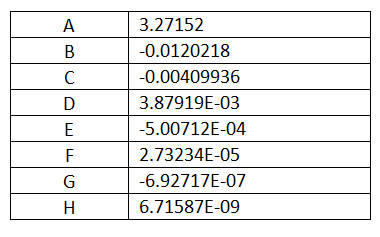
The z-axis is defined as the direction along the side height; the straight edge which will join the top is along the length, or L-axis. The data for the side height is fit with the seventh order polynomial
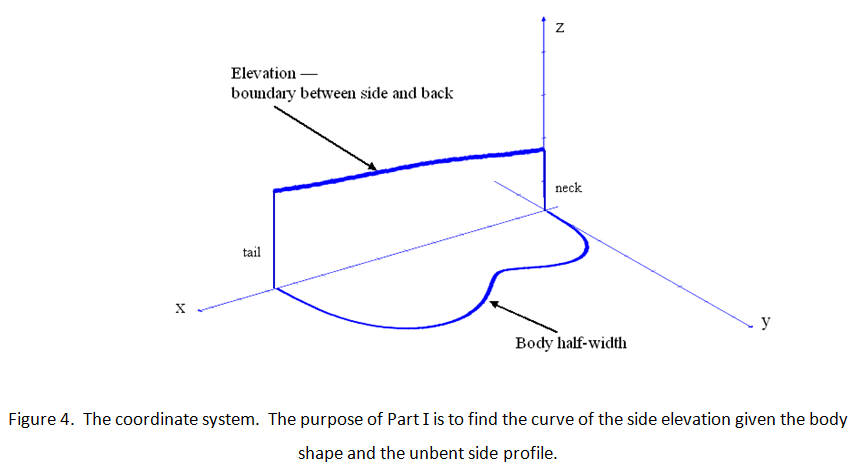

is the derivative of y(x). For any point x, this equation gives the distance along the length of the side up to that point, as shown in Figure 5.
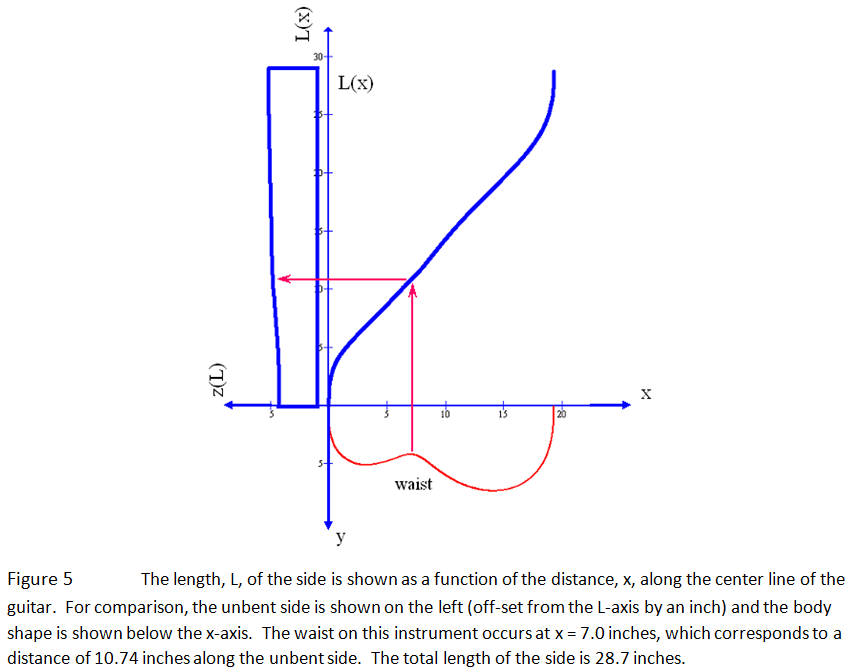
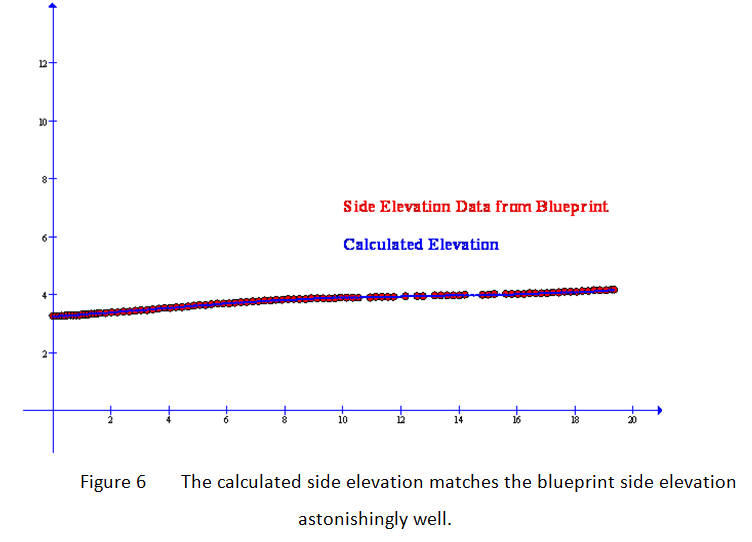
what does the unbent side profile look like?
This time the (seemingly-no-longer-available) Martin dreadnought blueprint is used. The first step is to use Curve Expert Pro to fit a curve to the body outline, y(x), which is required for the solution of equation (2). The body outline and length are shown in Figure 7.
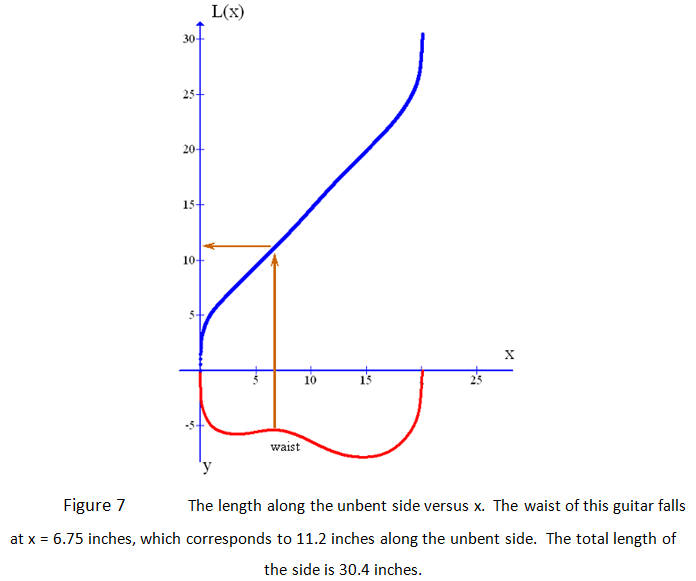
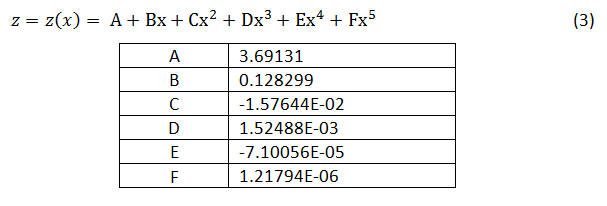
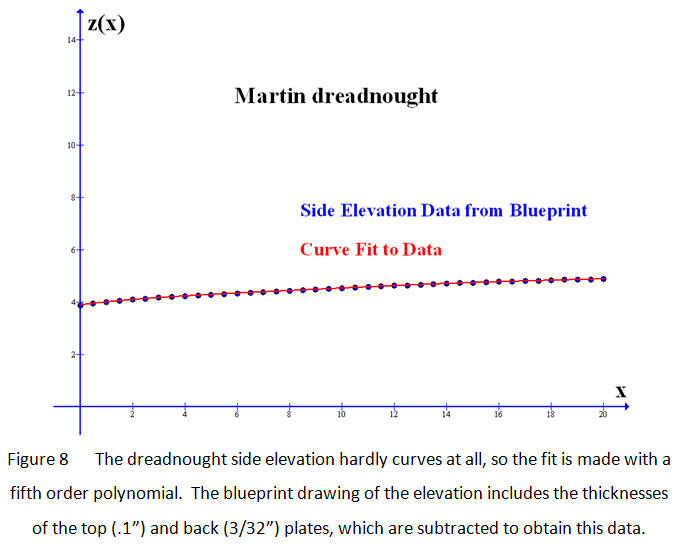
The solution of equation (3) is exact and equation (2) is solved numerically in a graphing program. The straightforward solution to the overall problem would be to find an exact solution to equation (2) by taking the derivative of y(x), performing the integral and using the rules of algebra to rearrange it as an expression for x as a function of L. Then substitute that expression for x(L) into equation (3) for the exact solution z(L). All of this - even if possible - is completely unnecessary, since the problem is already solved!
Equations (2) and (3) are a parametric representation of the relation between z and L, with the variable x acting as the parameter. The values over which the parameter ranges are its domain: 0<x<BL, where BL is the body length. Since L(x) and z(x) are already solved over the domain of x, simply make a graph of the Cartesian coordinates (L(x),z(x)) for all x within its domain.
This solution is shown in Figure 9 along with the data points of the unbent side from the Martin blueprint. The drawing of the unbent side has no scale, so the height at the neck is taken to be 3.68 inches. Again, the correlation between the calculation and the data is quite close, indicating that the formulation given here should be, for those blueprints which do not have a side profile, a useful method of "unbending" the sides.
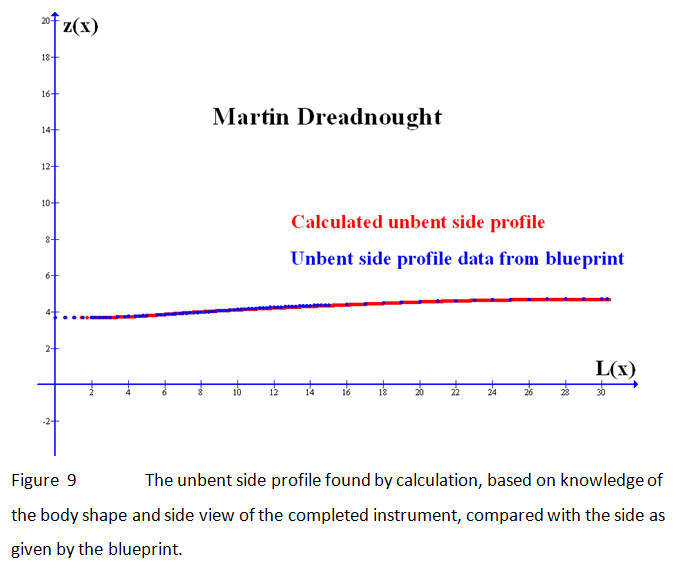
The End